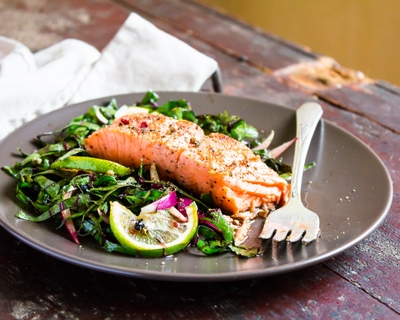Feeling a little anxious when you check out at the supermarket these days? Who isn’t?
Not only is the cost of groceries 8.6% higher than in February 2021 — the U.S. Department of Agriculture predicts prices will rise another 3-4% by the end of the year.
“The price of takeout and eating out are all increasing right now, too,” said Brittany Kingry, a registered dietitian at CoreLife Novant Health - Ballantyne. “It’s been really hard on people, with the prices of gasoline and other necessities popping up at the same time. So I’ve been trying to help my patients make good, healthy choices that fit within their personal budgets.”
While healthy foods are sometimes more costly, it is possible to buy and cook delicious, nutritious food — even when money is tight. Kingry offered some of her favorite tips for planning nourishing meals and snacks that fill you up without draining your wallet.
10 ways to eat well on a budget
1. Buy frozen and canned produce. Forget the stigma around these foods — they’re amazingly healthy. That’s because the fruits and vegetables are picked and canned or flash-frozen when their nutrient value is highest. So you get all the benefits of fresh produce for less money. Choose vegetables with low or no added sodium, and fruits packed in juice instead of syrup. When it comes to fresh, check the clearance-price produce. Just don’t let it sit for long.
2. Include protein sources other than expensive meats. Try eggs, quinoa, brown rice, tofu, nuts and seeds, and dry or canned beans and legumes. Try low-fat Greek yogurt. The large tubs last longer and are great for portion control. And, look for less expensive store brands.
3. Treat yourself to more fish. Fresh seafood tends to be expensive, but canned fish — including salmon and tuna — is a cheap and convenient way to add protein and health-inducing omega-3 fatty acids to your meals. Try adding fish to salads, making salmon or tuna patties, or eating it plain with a squeeze of lemon.
4. Add more whole grains. Brown rice, quinoa, oats, and other whole grains deliver vitamins, minerals and dietary fiber — which fills you up and helps supports healthy gut bacteria. They’re often available in bulk quantities, which makes them more affordable, too.
5. Stick to your weekly food budget. One way to do this is by shopping with a grocery list. If you frequently find yourself buying unnecessary items or making too many impulse buys, try ordering groceries online for curbside pickup or home delivery. This can help you save money by removing you from temptation.
6. Embrace ugly produce. Look online for companies selling “misfit” or “imperfect” produce at reduced rates. Some of my patients do this, and really enjoy it. They like that it's cheap — it really does help. Because the produce usually arrives weekly in large boxes, you may need to ask for less frequent deliveries to avoid wasting food.
7. Roast aging vegetables instead of tossing them. I love roasting my vegetables. It enhances their flavor and is a great way to use them up. So, next time you find wilting or wrinkly produce — including bell peppers, Brussels sprouts and tomatoes — in the fridge, just trim off any parts that look bad, drizzle with olive oil and pop them in your air fryer or oven. Grilled veggies are delicious, too!
8. Choose healthy snacks. Convenience snacks and fast foods are pricey. And, because they lack nutritional value, they can leave you hungry again in an hour or so. But, healthy snacks — like yogurt and fruit or celery with hummus or peanut butter — deliver the nutrients your body craves, including the fiber and healthy fats that keep you feeling satisfied. So, you’re likely to snack less and save money.
9. With good planning, batch cooking can cut waste. By using the same foods to make several meals at once, you’ll reduce leftover ingredients. And when you’ve prepped your meals, you’ll actually be more likely to eat them.
10. Try gardening: It’s awesome — and it saves a ton of money. Kids love it, too, and it’s a great way of getting them to eat more vegetables. If you don’t have space for a garden, look online for community gardens, or consider growing herbs, sprouts and veggies in containers on your patio or windowsills.











